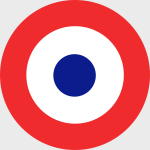Wings of the Great War WW10301 Royal Naval Armoured Car Section Rolls Royce Armoured Car - Light Armoured Motor Batteries of the Machine Gun Corps, "8-C-2", Western Front, 1916 (1:72 Scale)
"More valuable than rubies. I should like my own Rolls-Royce car with enough tyres and petrol to last me all my life."
- Thomas Edward Lawrence CB DSO FAS, A.K.A. "Lawrence of Arabia" discussing his squadron of nine Rolls Royce Armoured Car used in his operations against the Turkish forces
 The Rolls-Royce armoured car was a British armoured car developed in 1914 and used in World War I and in the early part of World War II. The Royal Naval Air Service (RNAS) raised the first British armoured car squadron during the First World War. In September 1914 all available Rolls Royce Silver Ghost chassis were requisitioned to form the basis for the new armoured car. The following month a special committee of the Admiralty Air Department, among whom was Flight Commander T.G. Hetherington, designed the superstructure which consisted of armoured bodywork and a single fully rotating turret holding a regular water cooled Vickers machine gun.
The Rolls-Royce armoured car was a British armoured car developed in 1914 and used in World War I and in the early part of World War II. The Royal Naval Air Service (RNAS) raised the first British armoured car squadron during the First World War. In September 1914 all available Rolls Royce Silver Ghost chassis were requisitioned to form the basis for the new armoured car. The following month a special committee of the Admiralty Air Department, among whom was Flight Commander T.G. Hetherington, designed the superstructure which consisted of armoured bodywork and a single fully rotating turret holding a regular water cooled Vickers machine gun.
The first three vehicles were delivered on December 3rd, 1914, although by then the mobile period on the Western Front, where the primitive predecessors of the Rolls-Royce cars had served, had already come to an end. Later in the war they served on several fronts of the Middle Eastern theatre. Chassis production was suspended in 1917 to enable Rolls-Royce to concentrate on aero engines.
The vehicle was modernized in 1920 and in 1924, resulting in the Rolls-Royce 1920 Pattern and Rolls-Royce 1924 Pattern. In 1940, 34 vehicles which served in Egypt with the 11th Hussars regiment had the "old" turret replaced with an open-topped unit carrying a Boys anti-tank rifle, .303-inch Bren machine gun and smoke-grenade launchers.
Some vehicles in Egypt and Iraq received new chassis from a Fordson truck and became known as Fordson Armoured Cars. Pictures show them as equipped with what appear to be turrets fitted with a Boys ATR, a machine gun and twin light machine guns for anti-aircraft defence.
Pictured here is a 1:72 scale resin replica of a Royal Naval Armoured Car Section Rolls Royce Armoured Car that was employed by Light Armoured Motor Batteries of the Machine Gun Corps, "8-C-2", on the Western Front during 1916.
Sold Out!
Dimensions:
Length: 2-3/4-inches
Width: 1-1/2-inches
Release Date: December 2016
Historical Account: "Steel Chariots in the Desert" - Six RNAS Rolls-Royce squadrons were formed of 12 vehicles each: one went to France; one to Africa to fight in the German colonies and in April 1915 two went to Gallipoli. From August 1915 onwards these were all disbanded and the materiel handed over to the Army which used them in the Light Armoured Motor Batteries of the Machine Gun Corps. The armoured cars were poorly suited to the muddy trench filled battlefields of the Western Front, but were able to operate in the Near East, so the squadron from France went to Egypt.
Lawrence of Arabia used a squadron in his operations against the Turkish forces. He called the unit of nine armoured Rolls-Royces "more valuable than rubies" in helping win his Revolt in the Desert. This impression would last with him the rest of his life; when asked by a journalist what he thought would be the thing he would most value he said "I should like my own Rolls-Royce car with enough tyres and petrol to last me all my life".
In the Irish Civil War (1922-1923), 13 Rolls-Royce armoured cars were given to the Irish Free State government by the British government to fight the Irish Republican Army. They were a major advantage to the Free State in street fighting and in protecting convoys against guerrilla attacks and played a vital role part in the retaking of Cork and Waterford. Incredibly, despite continued maintenance problems and poor reaction to Irish weather, they continued in service until 1944, being withdrawn once new tyres became unobtainable. Twelve of the Irish Army examples were stripped and sold in 1954.
At the outbreak of World War II, 76 vehicles were in service. They were used in operations in the Western Desert, in Iraq, and in Syria. By the end of 1941, they were withdrawn from the front line service as modern armoured car designs became available. Some Indian Pattern cars saw use in the Indian subcontinent and Burma.





 RNAS Armored Car Section Rolls Royce
RNAS Armored Car Section Rolls Royce 


